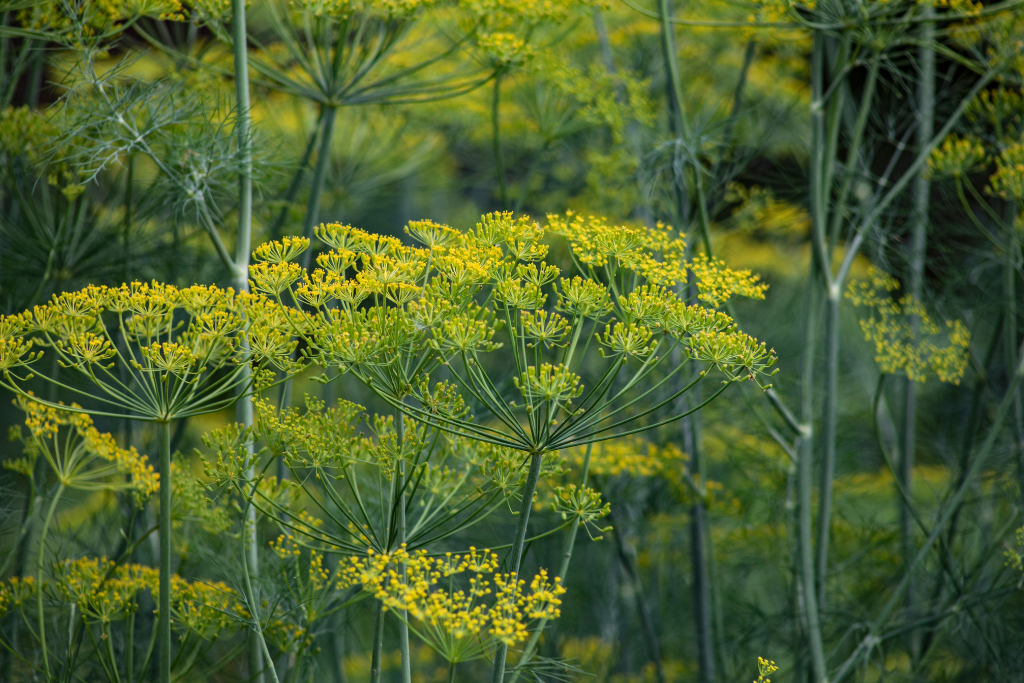My morning routine involves looking at the flowers in my garden and appreciating what I have accomplished so far. One day, my neighbor saw me and joined me. She seemed excited and said, “Isn’t that an Iris flower?”
She began to talk about its petals and characteristics. Further adding, “you know, flowers That start with I are magical! They look elegant and mysterious.”
I was curious and asked her to tell me more. She said, “Think about the Iberis, with pretty bunches of flowers dancing in the wind. How amazing it would be, to place it with the Impatiens, full of life and bright colors.”
This clicked an idea in my mind – To come up with a list of flowers that start with the letter I and grow them in my garden!
I got deeply invested in this idea and started searching on my phone. I found more of these special flowers and were amazed by their beauty, patterns, and lovely scents.
Now, I want to share this joy with you too. Let’s explore these lovely flowers together and enjoy the magic they bring to our world.
15 Flowers That Start With I
1. Iris – Majestic Rainbow Blooms
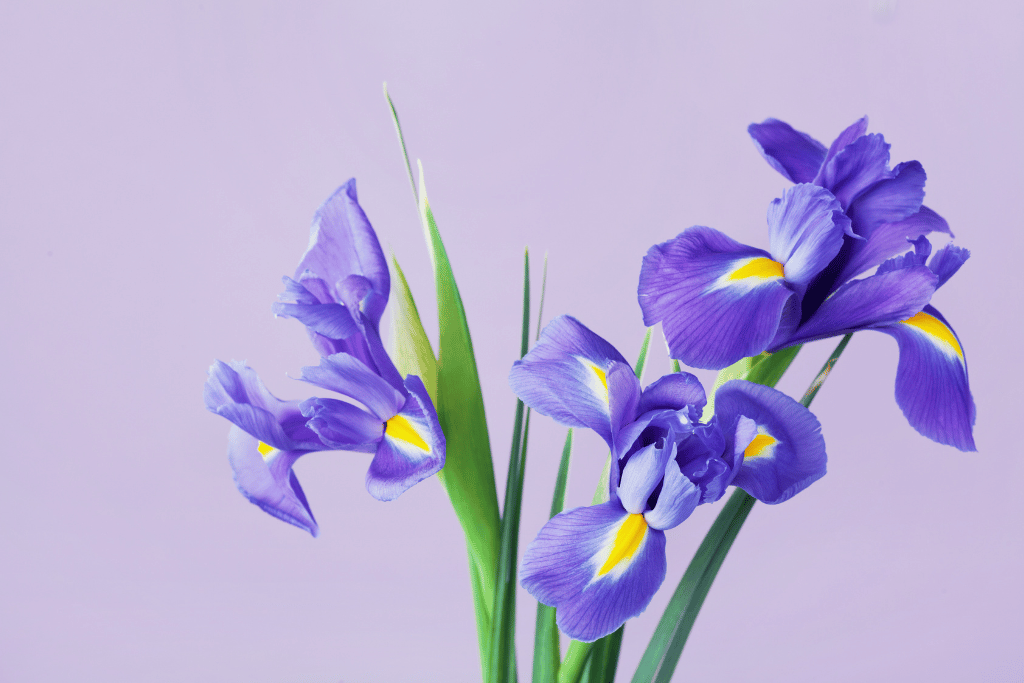
The Iris, with its slender, sword-like leaves and resplendent blooms, stands as a testament to nature’s artistry. This captivating flower boasts an extensive palette of colors that spans the spectrum like a painter’s dream, evoking images of a mesmerizing rainbow gracing the garden. Whether it’s the regal purples and blues reminiscent of royalty, the tender pinks that exude grace, or the sunny yellows that radiate warmth, Irises offer an abundance of choices. These blossoms possess a unique petal structure, intricate and layered, resembling a delicate tapestry woven by skilled hands.
Hailing from varied landscapes such as Europe, Asia, and North America, Irises hold a rich tapestry of cultural symbolism. They are not only prized for their ornamental value but have also become emblematic of virtues like faith, wisdom, and valor. These meanings have woven themselves into both historical narratives and modern gardens alike, rendering Irises not merely flowers, but messengers of profound sentiments.
2. Ixora – Clusters of Tropical Brilliance

Ixora, a plant native to the tropical havens of Asia, exhibits a stunning spectacle of clustered blooms that resemble a fireworks display of nature. These flowers, with their star-shaped allure, evoke an image of twinkling constellations adorning the earth. In shades spanning the warm spectrum of reds, oranges, yellows, and pinks, Ixoras are nature’s own palette of vibrant pigments painted across landscapes.
Thriving in the embrace of warm, humid climates, Ixoras have carved a niche as favored subjects for horticultural artistry. Their compact growth habit lends itself to artistic manipulation, making them ideal for crafting ornamental hedges that frame landscapes with intricate living borders. The dense clusters of blooms seem to celebrate life’s abundance, and their resilience amidst challenging conditions echoes the spirit of tenacity that resonates in tropical ecosystems.
3. Impatiens – Colorful Shade-Loving Blooms
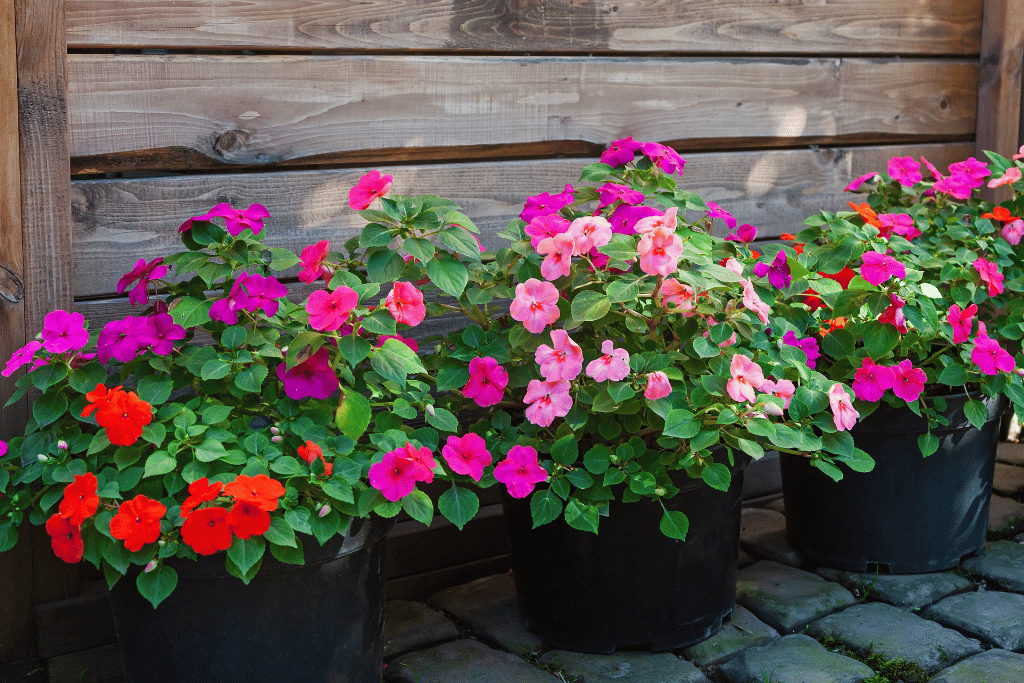
Impatiens, colloquially referred to as Busy Lizzies, are heralded as the envoys of color to shaded realms. These delicate blooms, originating from African and Asian origins, have mastered the art of thriving in the filtered light that dances through the trees. Their presence amidst shaded gardens is akin to a vibrant orchestra playing soft, harmonious melodies that resonate with nature’s subtlety.
The allure of Impatiens lies not only in their color but in the intricate symmetry of their petals. These petals, numbering five and arranged with captivating precision, mimic the intricate patterns of life itself. From the purest white to the deepest hues of pink, red, and purple, Impatiens have embraced the challenge of thriving in light-limited environments while providing a display of colors that can rival sunlit gardens.
4. Indian Blanket – Wildflower of Vibrant Beauty

The Indian Blanket, known scientifically as Gaillardia, embodies the spirit of wild beauty that graces the landscapes of North and Central America. Its daisy-like blossoms, reminiscent of the sun’s radiance, emerge as nature’s own celebration of vibrancy. The petals, an array of fiery reds and oranges edged with strokes of brilliant yellow, are reminiscent of the warmth that accompanies sunrises and sunsets.
As a wildflower, the Indian Blanket carries an air of untamed elegance, rooted in the landscapes it calls home. It thrives in open meadows, embracing the elements with a resilience that speaks of the hardiness of native flora. The intricate patterns of color pay homage to the native cultures that have long revered the land, weaving stories and traditions with the threads of these blossoms.
5. Iceland Poppy – Delicate Elegance from the North
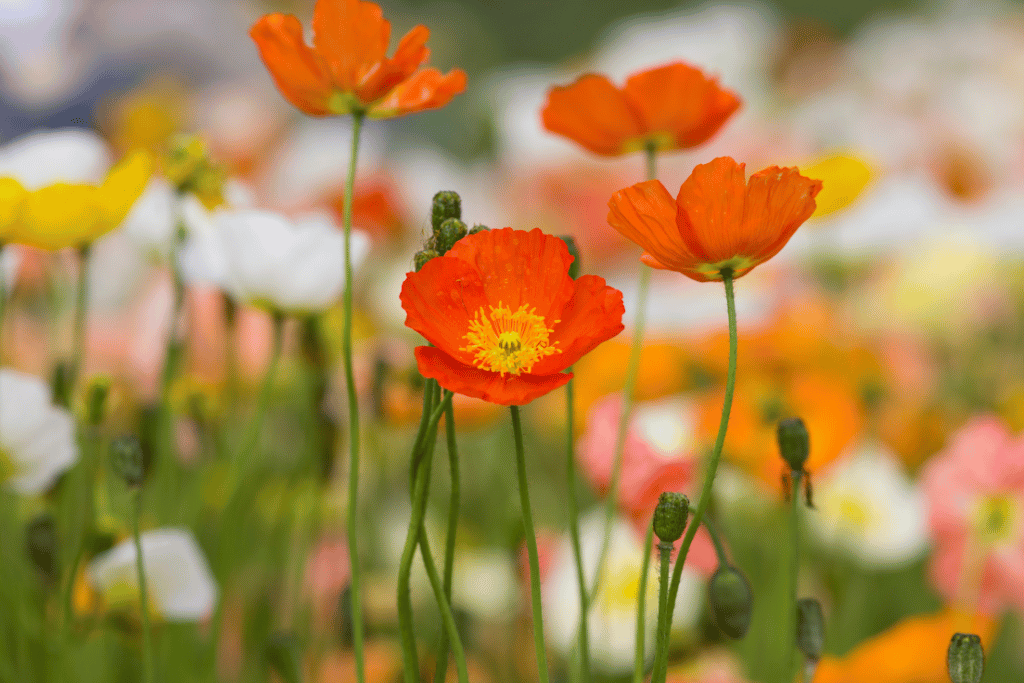
Despite their delicate appearance, Iceland Poppies are testament to nature’s adaptability. They flourish in cooler temperatures, their blooms casting a gentle defiance against the icy winds of their origin. Their fleeting presence seems to encapsulate the fleeting yet profound beauty of life itself, a reminder of the transience that adds value to every passing moment. Planted as cool-season annuals, they grace gardens with a touch of elegance that echoes the serenity of untouched snowfields.
The Iceland Poppy, a delicate wonder originating from the subpolar regions of Europe and North America, presents itself as a contradiction of delicateness and resilience. Its petals, dainty and see-through, exude a sense of delicate elegance that contradicts the harsh environments it inhabits. Evoking the fragility of freshly fallen snow, these petals emerge in shades ranging from pure white to the softest yellows and pinks.
6. Ipomoea – Morning Glory’s Radiant Cousins
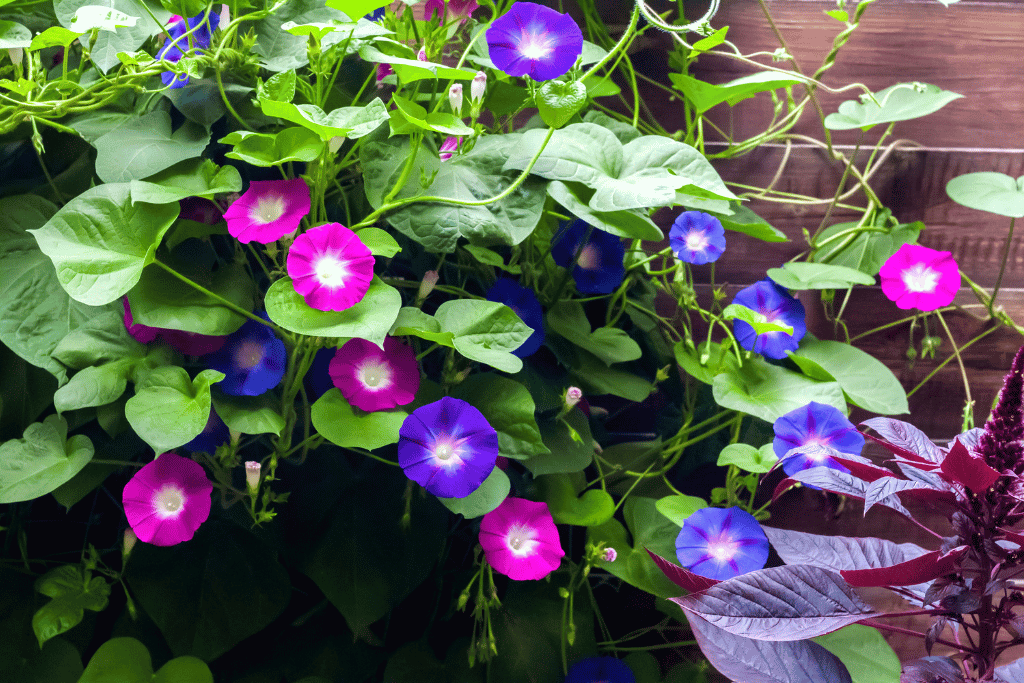
The genus Ipomoea, which includes a diverse array of blooming plants, possesses a captivating charm akin to that of its famous relative, the Morning Glory. These flowers serve as a natural tribute to the early morning, unfurling their lively, horn-shaped petals to welcome the first beams of sunlight. Native to tropical and subtropical regions, Ipomoea flowers display an impressive spectrum of colors, from deep blues and purples to vibrant pinks, oranges, and reds.
Ipomoea’s tendrils are not limited to land alone; some species even thrive as climbers in aquatic environments. As they unfurl their blossoms each morning, they epitomize the fleeting beauty of life’s precious moments. Whether cascading from trellises or adorning fences, Ipomoea creates a living symphony of color, inviting the observer to be part of nature’s daily ritual.
7. Ixia – Delicate Stars of Spring
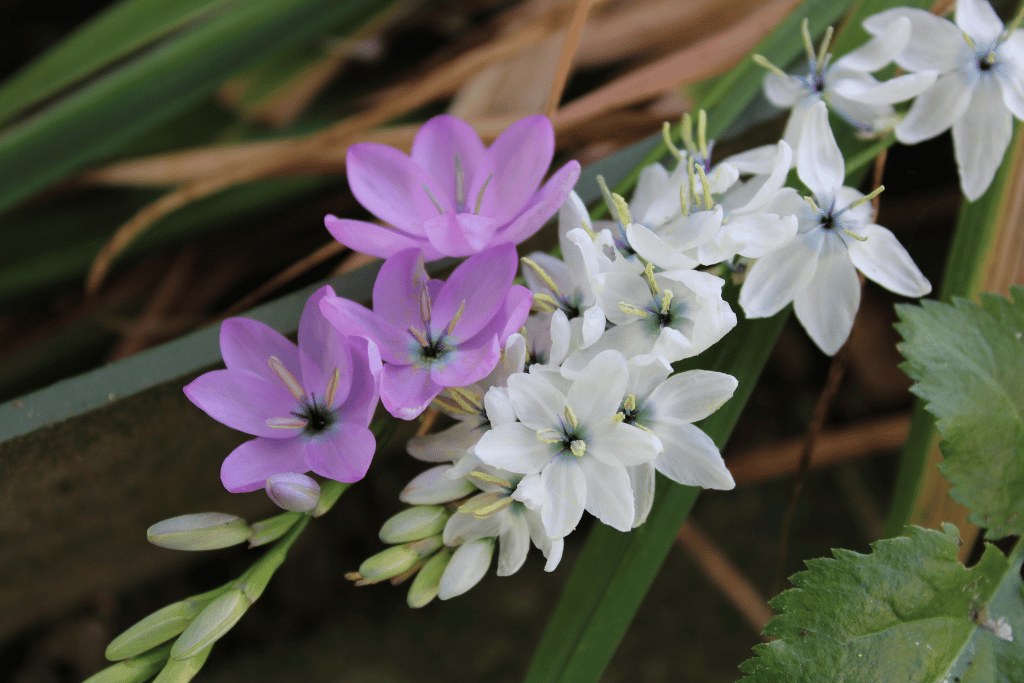
Ixia, often referred to as African Corn Lilies, are jewels of the spring garden. Native to South Africa, these petite yet exquisite flowers resemble stars scattered across the landscape. With slender stems and intricate blooms, Ixia captivates with its unique structure and vivid colors. Shades of pink, purple, blue, and white adorn these delicate petals, creating a carpet of ephemeral beauty that signals the arrival of spring.
As they sway in the gentle breeze, Ixia evokes a sense of wonder akin to stargazing on a clear night, connecting observers to the universe’s grandeur. Ixia’s charm lies not only in its appearance but also in its adaptability. These flowers thrive in a variety of soil conditions, making them versatile additions to gardens and landscapes.
8. Iberis – Blanketing Beauty of Candytuft
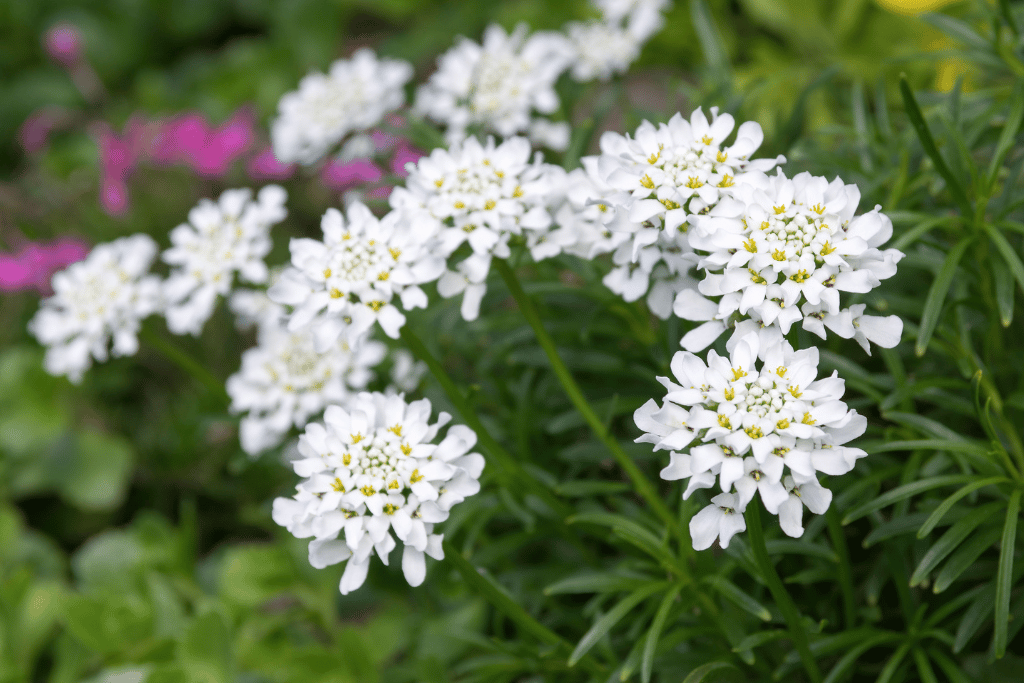
Originating from Europe and Western Asia, Iberis is celebrated for its ability to transform open spaces into a sea of ethereal white, pink, or purple. The distinct cluster of tiny, four-petaled flowers creates a soft and inviting texture, resembling nature’s own lacework. These resilient flowers thrive in various conditions, from rocky slopes to garden borders. Iberis, commonly known as Candytuft, is a flowering plant that blankets landscapes with a profusion of delicate blossoms.
As they flourish, Iberis not only adds a visual appeal but also draws pollinators like bees and butterflies, contributing to the vitality of ecosystems. The charm of Candytuft lies in its ability to infuse both cultivated and wild landscapes with an air of timeless elegance.
9. Ipheion – Spring’s Whispering Stars
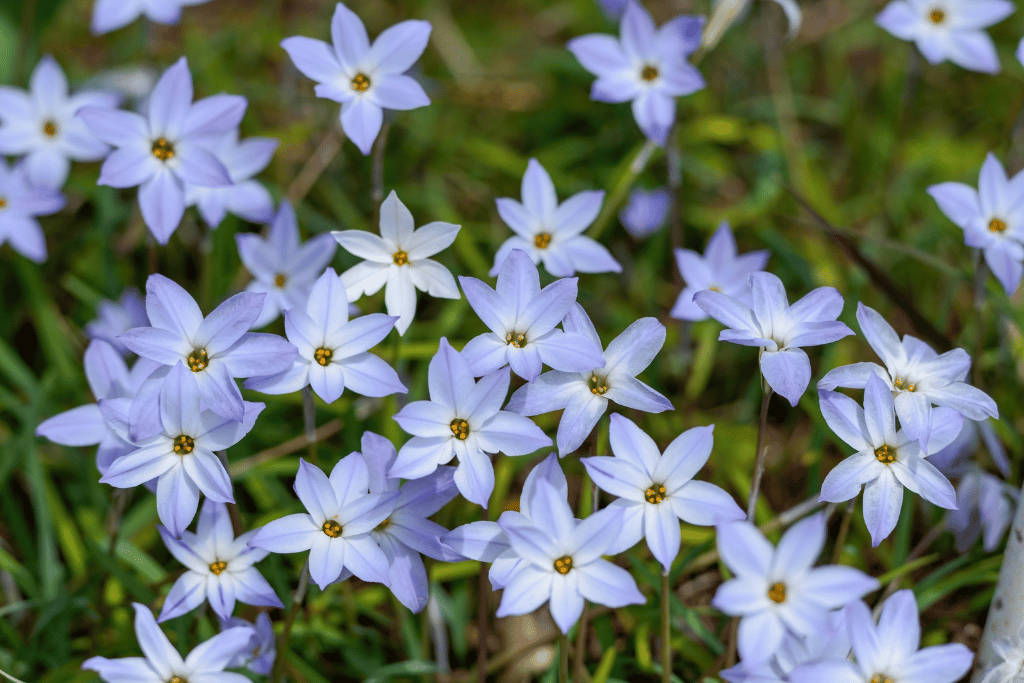
Ipheion, recognized as the Spring Starflower, appears as an envoy of springtime, displaying its dainty blossoms that bear a resemblance to stars scattered across the ground. Indigenous to South America, these flowers reveal their allure in the beginning of spring, frequently pushing through soil adorned with frost, heralding the conclusion of winter’s rest. With petals that range from pure white to pale blue, Ipheion adds a gentle touch of color to awakening landscapes.
These bulbs thrive in well-draining soil and sunny spots, often naturalizing and forming cheerful carpets of blooms over time. Ipheion’s presence in gardens reflects the essence of spring – a season of renewal and fresh beginnings. Their ephemeral beauty serves as a reminder that even the most delicate flowers can endure and thrive against the odds.
10. Italian Aster – Endearing Daisies of Autumn

Italian Asters often bloom in late summer and fall, adding a burst of color to landscapes just as other plants are winding down. Their tall, sturdy stems make them ideal for cutting and using in fresh bouquets. These flowers evoke feelings of nostalgia, reminiscent of classic cottage gardens, and bring a touch of timeless elegance to both indoor and outdoor spaces.
With petals that come in a variety of colors, including purples, pinks, blues, and whites, Italian Aster creates a tapestry of hues in gardens and floral arrangements. Italian Aster, known scientifically as Callistephus chinensis, is a delightful annual flower cherished for its charming daisy-like blooms. Originating from China, this plant’s popularity has spread to many corners of the world due to its colorful display and versatility.
11. Indian Paintbrush – Nature’s Palette of Vibrant Hues
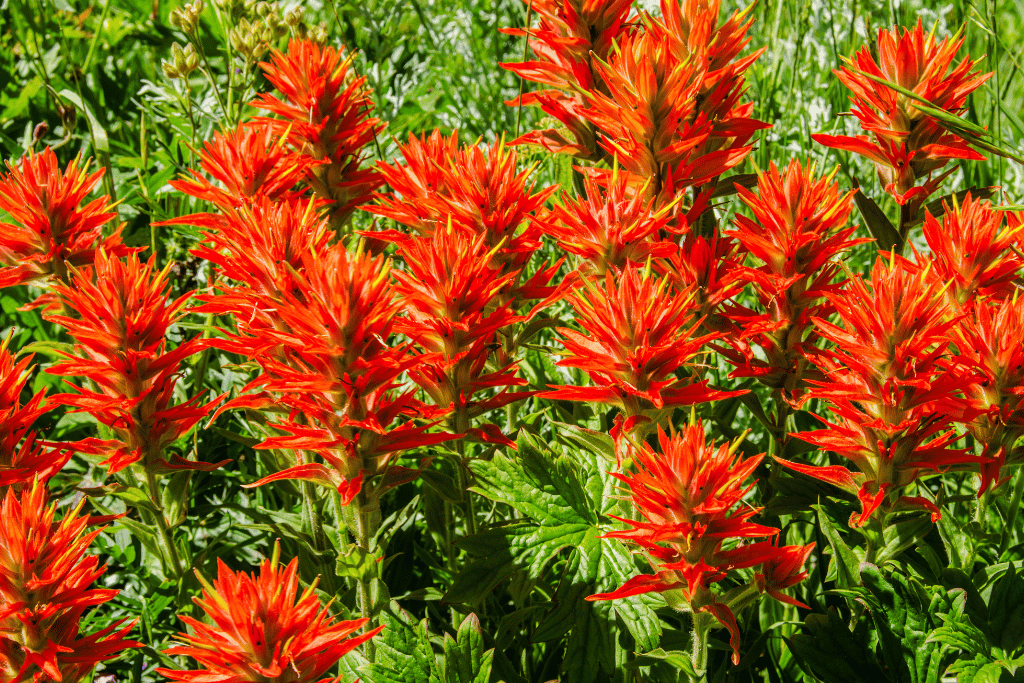
Indian Paintbrush, known scientifically as Castilleja, is a wildflower that graces diverse landscapes with its vibrant and captivating colors. Native to North America, this unique plant displays a remarkable array of hues, ranging from fiery reds and oranges to soft pinks and yellows. Its tubular flowers resemble a painter’s brush dipped in nature’s most vivid pigments.
Indian Paintbrush frequently forms symbiotic partnerships with specific grasses, demonstrating its flexibility and contribution to the well-being of the ecosystem. These indigenous flowers craft stunning spectacles as they spread across fields and meadows, introducing an element of unrefined elegance to the environment. The sight of Indian Paintbrush blossoming serves as evidence of nature’s boundless inventiveness
12. Impala Lily – Majesty in the African Wilderness
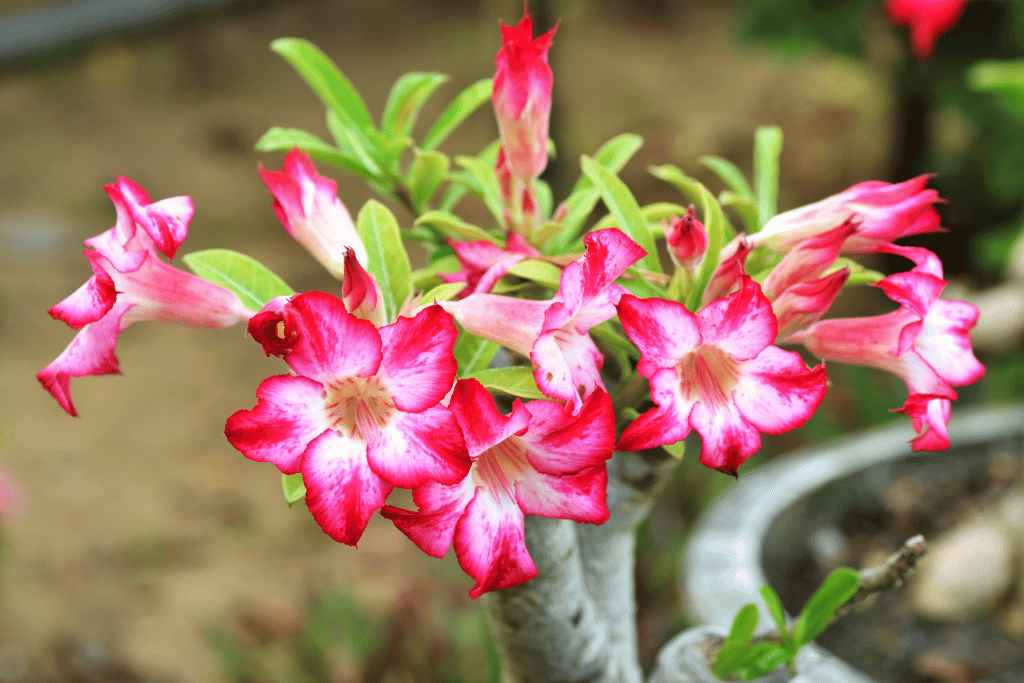
The Impala Lily, scientifically labeled as Adenium multiflorum, is a captivating succulent originating from Southern Africa. Possessing a sculptural structure and captivating flowers, the Impala Lily perfectly captures the robust elegance of its dry native environment. The trumpet-shaped flowers, often in shades of pink, red, or white, stand out against the plant’s thick, fleshy stems and leaves.
Despite its tough appearance, Impala Lily requires delicate care, especially in cultivation. It has gained popularity as a sought-after ornamental plant due to its striking visual appeal and unique growth habit. In its native environment, this succulent is cherished for its tenacity in the face of adversity, mirroring the strength and resilience of the African wilderness.
13. Iceberg Rose – Elegance in White Blossoms

Iceberg Roses have earned their place as one of the most popular rose varieties due to their resilience, disease resistance, and continuous blooming habit. With its pristine white blooms and a profusion of petals, Iceberg Roses create an air of timeless elegance in gardens. These roses, often found in clusters, stand as a symbol of purity and grace. The contrast of their white blossoms against deep green foliage evokes a sense of serenity and refinement. Whether used as standalone specimens or part of larger rose compositions, Iceberg Roses are a living ode to the enduring beauty of classic florals.
This white queen, scientifically known as Rosa ‘Iceberg,’ is a classic and beloved rose cultivar that has charmed gardeners for decades.
14. Ionopsis – Miniature Orchids of Intricate Beauty
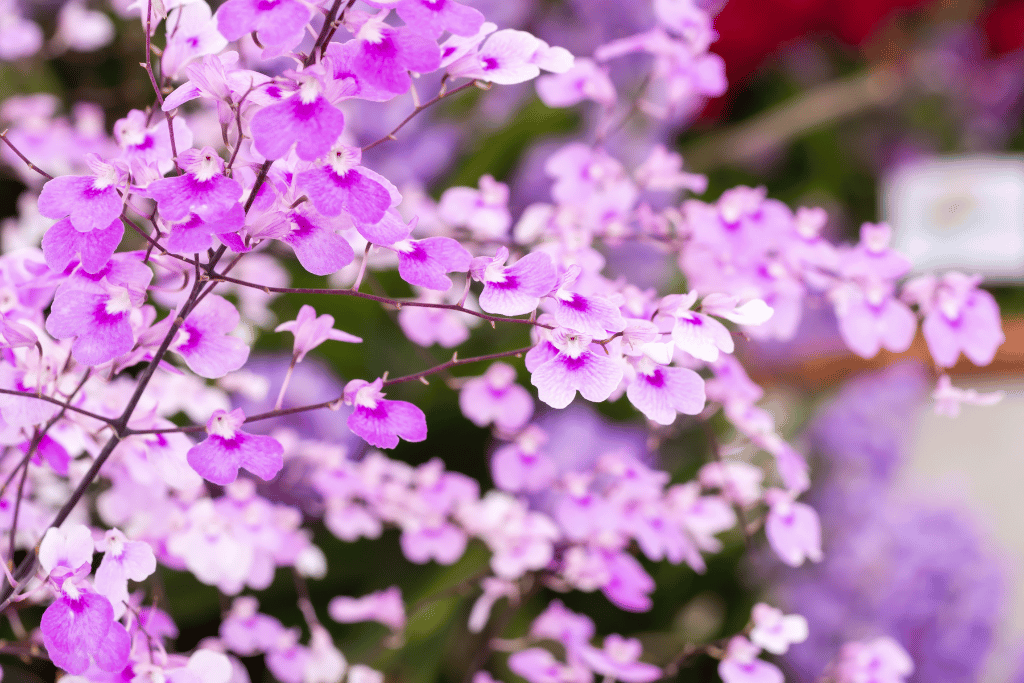
Ionopsis, a genus within the orchid family, captivates with its delicate and intricate blooms. These miniature orchids hail from tropical regions of the Americas, where they often grow in the cool and moist environments of cloud forests. Despite their small stature, Ionopsis orchids boast a remarkable variety of colors, including shades of white, pink, and lavender.
The unique structure of Ionopsis flowers, with their distinct lip and intricate patterns, showcases nature’s attention to detail. While their individual flowers are small, they often appear in clusters, creating a captivating display. Ionopsis orchids are a testament to the diversity within the orchid family, offering a glimpse into the exquisite world of these mesmerizing blooms.
15. Inula – Golden Rays of Summer Sunshine

Inula, a genus encompassing both wildflowers and ornamental plants, brings a burst of golden sunshine to gardens. Native to Europe and parts of Asia, these plants feature large, daisy-like blooms that radiate warmth. The bright yellow flowers, often carried on tall stems, capture the essence of summer’s brilliance.
Inula’s appeal extends beyond its blossoms – its large leaves add a lush backdrop to the garden, creating a harmonious balance of foliage and flowers. The plant’s adaptability and hardiness have led to its use in various garden styles, from cottage gardens to naturalistic landscapes. Inula’s golden rays serve as a reminder of the joy and vitality that the summer season brings.



